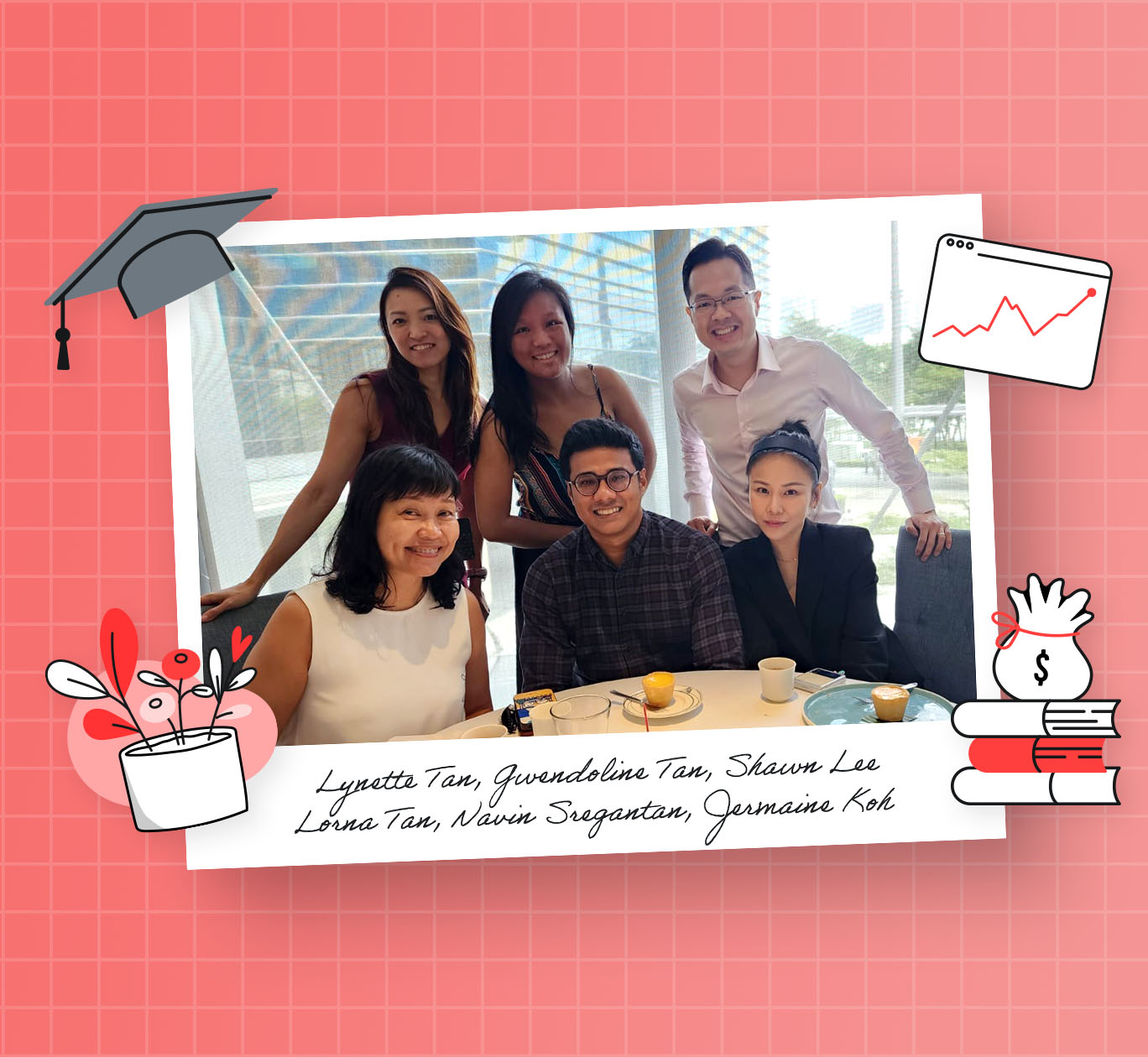Doom Spending - Short term gratification or long-term pain?
By Lynette Tan
![]()
If you’ve only got a minute:
- Doom spending to ease our woes is not a sustainable long-term solution for our well-being.
- While it is fine to treat ourselves once in a while, it’s best to set aside a budget for it and focus on building healthy financial habits for our long-term financial health.
- Boosting your financial literacy knowledge can combat impulsive spending behaviour and highlight the importance of saving, protecting, investing and retirement planning.
![]()
You might have heard of “girl math” and “loud budgeting” – personal finance trends that have hit social media recently and popularised by their younger audience. Doom spending is another, and it’s easy to guess what it is - a cousin of retail therapy maybe?
Doom spending is loosely defined as spending money despite concerns of a bleak economic and world outlook. When so much happening is out of your control, reaching for your wallet gives you the purchasing power to buy what you want. It appears to be a stress coping mechanism for some individuals who have fears about the economy, but it comes at the expense of their financial well-being.

Why do people engage in Doom Spending?
The last few years were not the best times – the world had survived 2.5 years of pandemic followed by a period of higher inflation and cost of living, ongoing wars, as well as news of retrenchment in recent months.
These are events that may contribute to a feeling of pessimism and influence consumers to focus more on enjoying the present since the future seems hopeless. In this way, the act of buying something you like provides instant gratification and is seen as more “logical” compared to saving for the longer term.
For individuals who doom spend, it may be easier to spend money on things that offer immediate fulfilment, especially when saving doesn’t appear to move the needle to achieve the financial goals of buying a home or retirement. When resources feel scarce or when face with a chaotic situation, they tend to focus on what they can control. And for them, big-ticket items like houses and retirement income are seen as out of reach.
A recent survey by the Institute of Policy Studies (IPS) and Channel NewsAsia (CNA) found that younger people (aged 21 to 24) are more susceptible to buying things to make themselves happy, instead of planning financially for the future. With Singapore’s cultural context in mind, those who belong to this age group are likely to be staying with the parents and may have fewer financial obligations, thus having excess funds to spend on their hobbies and the likes.

It is also possible that those in this age group spend more time on social media, which may contribute to the feelings of “fear of missing out” (FOMO) and be tempted to buy items that seem common among their peers, even if they are unaffordable for them.
Impact of Doom Spending on an individual's long-term financial health
As with all expenses, if we do not spend consciously or set a budget, we risk overspending, potentially stack up debts and be stuck in an undesirable negative cashflow position. While there is nothing wrong in treating ourselves occasionally, it is important to keep track of our expenses, keep to a budget and set aside at least 3 to 6 months’ worth of expenses as emergency funds.
After the individual has considered adequate insurance, surplus savings should be invested to keep up with inflation and to build wealth for a sustainable financial future.
With insufficient savings allocated to a long-term strategy of making them work hard to build a nest egg for the future, the individual will eventually have to face the consequences of being unprepared to meet mid-term and long-term goals like retirement.
From a psychological point of view, values about money are often built from young and influenced by those around us. If an individual is surrounded by friends/family who adopt the same actions to cope, they could be more susceptible to spending as they wish.
This is where financial literacy can come in to help them overcome this psychological barrier and resist doom spending.
Financial literacy can help to combat impulsive spending behaviours
Doom spending seems to affect the younger population segment more. In a way, it is ironical because the one thing that young adults have working for them is the advantage of time. Every dollar set aside will compound in the long run and work in their favour.
Financial literacy can highlight the importance of sticking to a budget, saving for the rainy day, adopting a long-term investing approach, and emphasise the importance of having sustainable finances for our own, as well as our loved ones’ future.

Coupled with the use of financial tools and real-life scenarios, financial literacy can help individuals understand their behavioural biases, the consequences of debt, the importance of having a financial cushion when difficult situations happen (such as a retrenchment or medical crisis) and offer insights on the steps to take to close protection and investing gaps.
While there’s nothing wrong with a little treating when you have the blues, doom spending is definitely not the “self-care” that can enhance your well-being in the long run.
Here are 6 tips.
- Track your expenses – tracking our expenses can help us to understand our own spending patterns so that you can start to adjust how much you spend on each category. You can also use the Plan tab on DBS digibank to view your expense categories and set up a budget.
- Set up a monthly budget – setting a budget for your main spending categories and stick to it.
- Have a “feel good” budget – if you feel that you are entitled to a treat occasionally, you can set aside a “feel good” budget for yourself to spend as you wish so that you do not deprive yourself.
- Adopt the “Pay yourself first” approach – an individual can set up a standing instruction to put aside a fixed amount per month to a savings account to ensure that they prioritise saving first. They can then work around the balance to spend on their monthly needs and wants.
- Unsubscribe from shopping apps/websites – mindlessly scrolling on shopping apps and sites can cause us to add to the cart too easily. Deleting these apps can help to keep them out of your mind. Another way is to not link your payment methods so that it is less convenient to click and buy.
- Reduce/cancel credit cards if you find it hard to control your use of credit.
Focus on building healthy financial habits
While it is fine to reward ourselves once in a while, it is prudent to focus on building these 4 healthy financial habits for our long-term financial health. Start small with achievable objectives and take it step by step.
- Save – Save regularly, build up cash reserves for emergencies; Save at least 10% of income, and set aside at least 3-6 months of emergency cash.
- Protect – Protect against large medical bills and loss of income; Have a suitable hospitalisation plan, and consider death insurance at 9 times annual income, critical illness cover at 4 times annual income, and long-term care cover.
- Grow – Invest over time and diversify; Invest at least 10% of take-home pay and have an invested assets to net worth ratio of at least 50%
- Retire – Generate passive income flows; Achieve at least the CPF Full Retirement Sum (which is S$205,800 this year), and have more than 1 passive income stream.
Ready to start?
Check out digibank to analyse your real-time financial health. The best part is, it’s fuss-free – we automatically work out your money flows and provide money tips.
Speak to the Wealth Planning Manager today for a financial health check and how you can better plan your finances.
Disclaimers and Important Notice
This article is meant for information only and should not be relied upon as financial advice. Before making any decision to buy, sell or hold any investment or insurance product, you should seek advice from a financial adviser regarding its suitability.







That's great to hear. Anything you'd like to add? (Optional)
We’re sorry to hear that. How can we do better? (Optional)